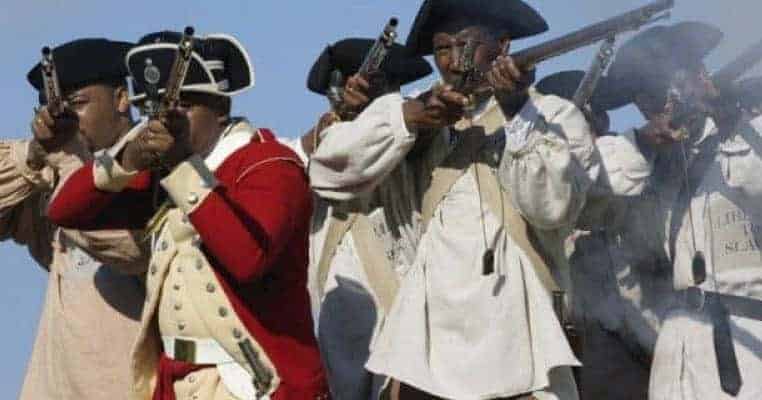The American Revolution brought hope to America’s slaves, as the Patriots’ talk of “Liberty” and “Equality” ignited their dreams. However, as African Americans discovered, even the greatest champions of freedom were hesitant to extend it to black people. By contrast, the British had few compunctions about discomfiting the Patriots by offering freedom to slaves who fled their rebel masters and sided with the British. So it is unsurprising that many African Americans became Loyalists, preferring the British who offered them freedom, to the Patriots who did not.
Following are ten significant people, things, and events from the history of Black Loyalists during the American Revolutionary War.
Why Many African Americans Fought For the British
Today, the struggle between Britain and the American colonists is usually presented as a fight for liberty between tyranny and a people yearning for freedom. However, from the perspective of many colonists of African descent, it was not so straightforward, and the side that offered them liberty and freedom from tyranny was that of the British, not the Patriots.
In 1775, Samuel Johnson summed up one of the greatest contradictions of the Patriots’ fight for freedom: “How is it that we hear the loudest yelps for liberty from the drivers of Negros?” Many of the American colonists’ foremost advocates of liberty and equality owned hundreds of other human beings as chattel slaves. Some, such as Thomas Jefferson, lived lavishly off the sweat and blood of hundreds of slaves who toiled for their benefit, driven by the lash and the threat of extreme violence.
Blacks fought for the Patriots in the war’s early battles of Lexington, Concord, and Bunker Hill. However, when George Washington took command of the Patriot forces, he was appalled to see blacks bearing arms. With slave uprisings being a constant fear of slaveholders, the sight of armed blacks was guaranteed to discomfit a plantation owner such as army’s new commander. So he decreed an end to the recruitment of black soldiers, and eventually purged them from the Continental Army. It was only later, after his forces were drastically reduced by desertions and diseases, that Washington was forced to turn a blind eye to black soldiers in his army. The British thought differently about arming blacks, and sought to turn the rebels’ slaves against them. In November of 1775, Virginia’s British governor, Lord Dunmore, offered slaves their freedom in exchange for service to the Crown.
That struck slaveholders such as Thomas Jefferson as monstrous, and convinced many of the undecided amongst their ranks to side with the Patriots. In a nod to that sentiment, the Declaration of Independence, despite the “All men are created equal” part, assails the British for offering the colonists’ slaves an opportunity to secure that equality.

In 1779, general Henry Clinton, the British commander in chief in America, went even further, and issued the Phillipsburgh Proclamation, which decreed that any slaves who fled their rebel masters and made it to British lines were free. Bondsmen took up the offer and fled by the thousands, hoping to trade slavery under the Americans for freedom with the British. For example, in South Carolina a quarter of the slave population – about 25,000 slaves – fled to the British. So did a quarter of Georgia’s slave population, and about 30,000 slaves in Virginia. Many runaways were caught and savagely punished by their masters, then returned to slavery, but those who reached British territory were free. During the war, over 100,000 slaves succeeded in escaping bondage by making their way to freedom behind British lines.
The freed slaves aided the British as laborers, guides, spies, and fighters. Many served with conspicuous courage, sporting sashes that read “Liberty to Negroes” – freedom fighters in the most literal sense of the word. Unsurprisingly, many former slaves, after years of mistreatment and indignities, were quite eager to spill the blood of their former masters when given the chance.

